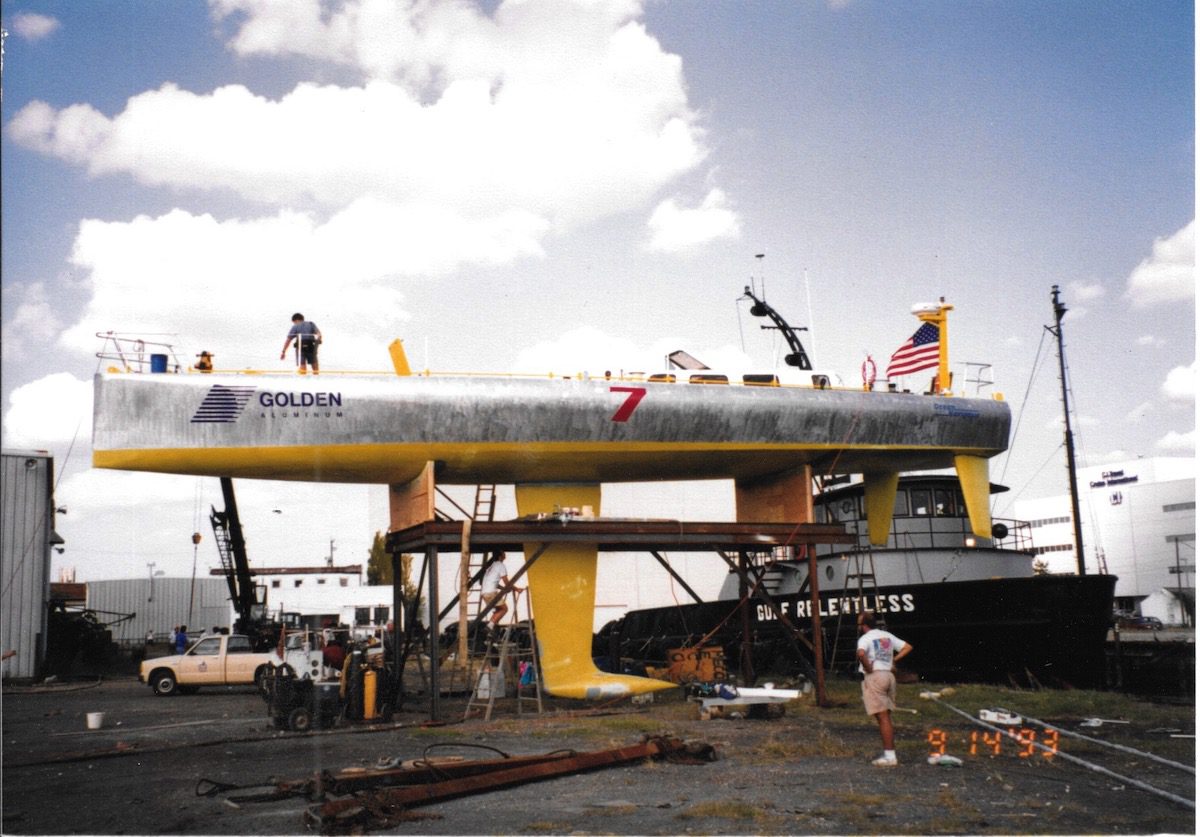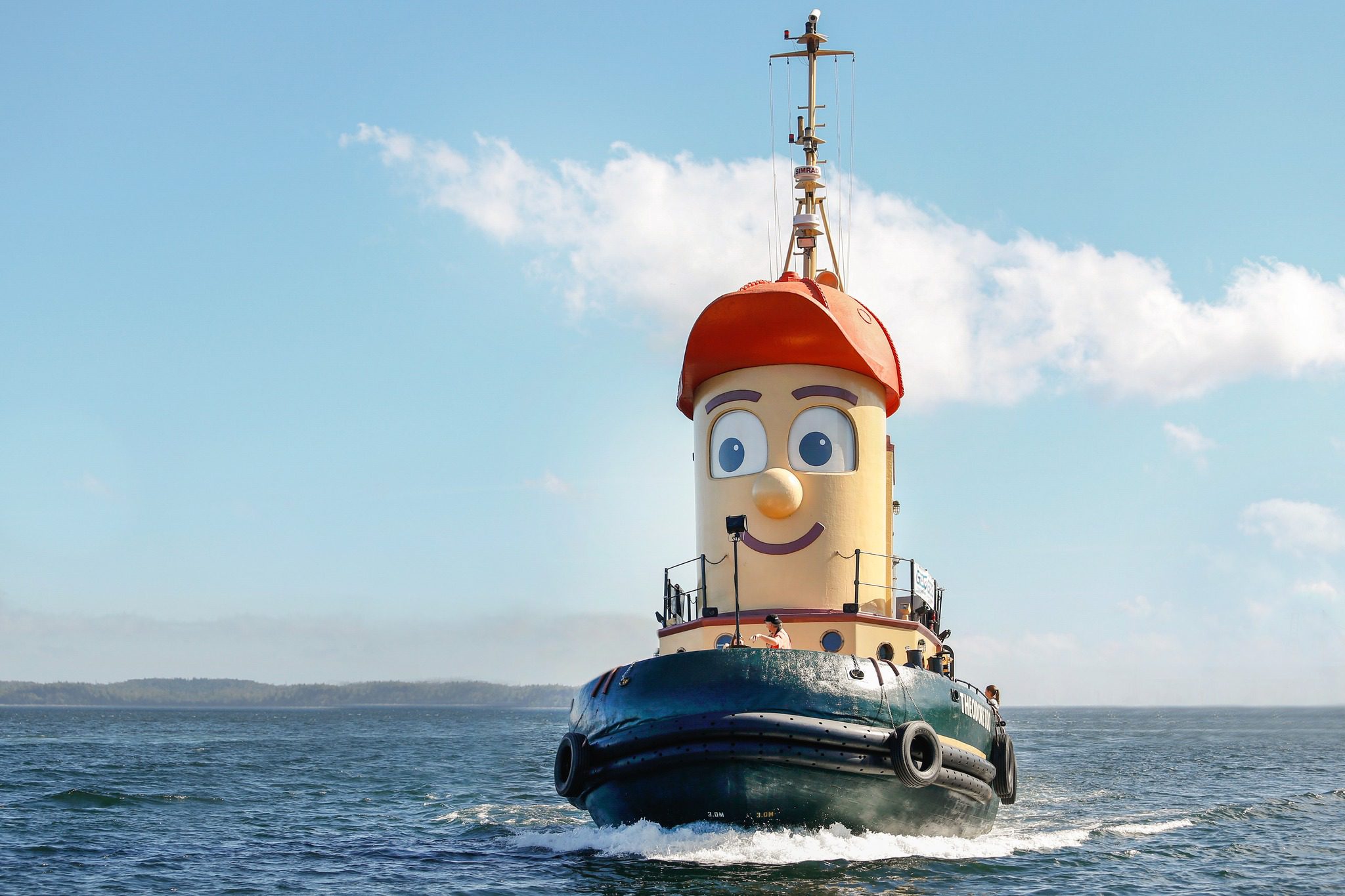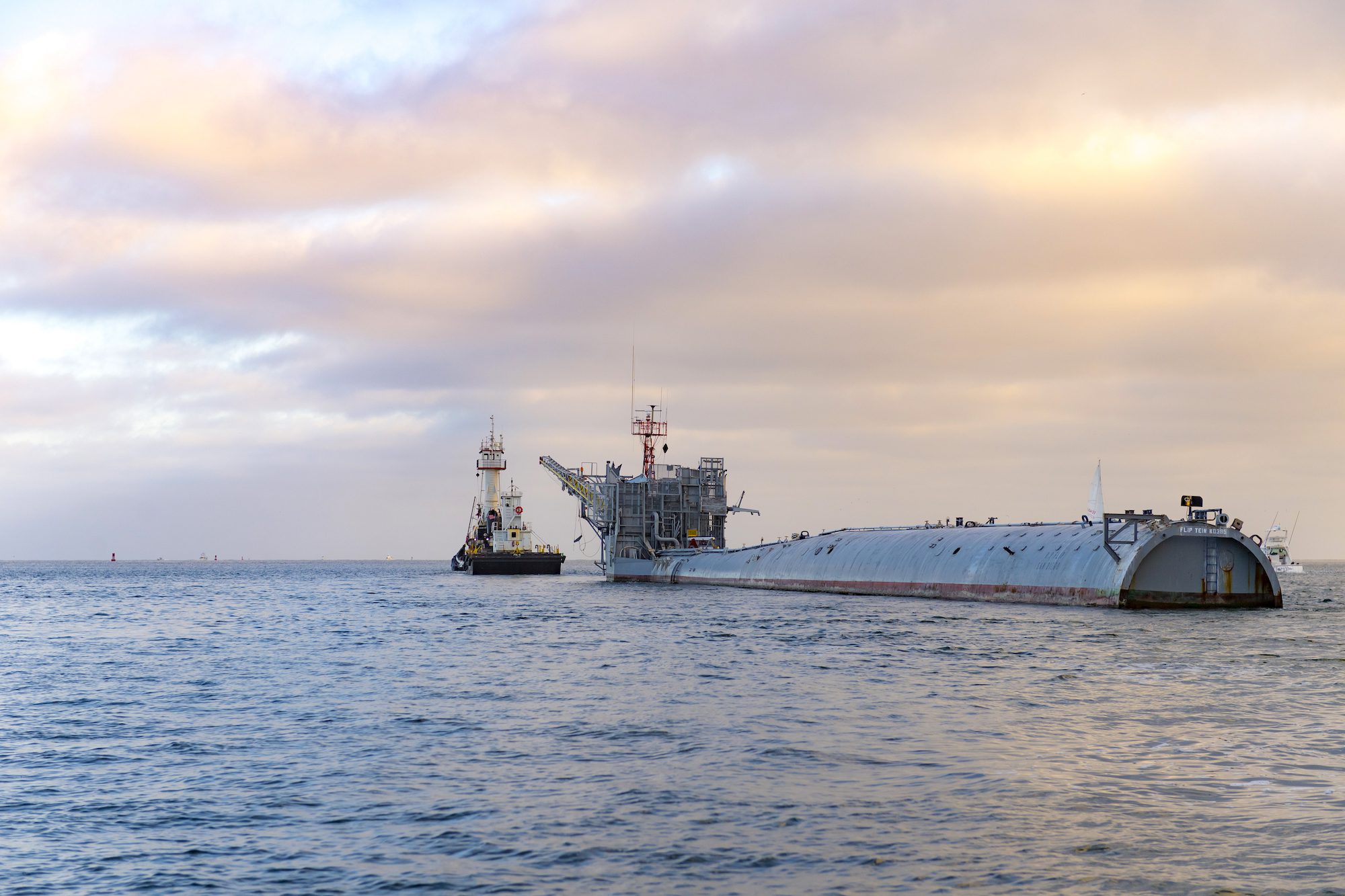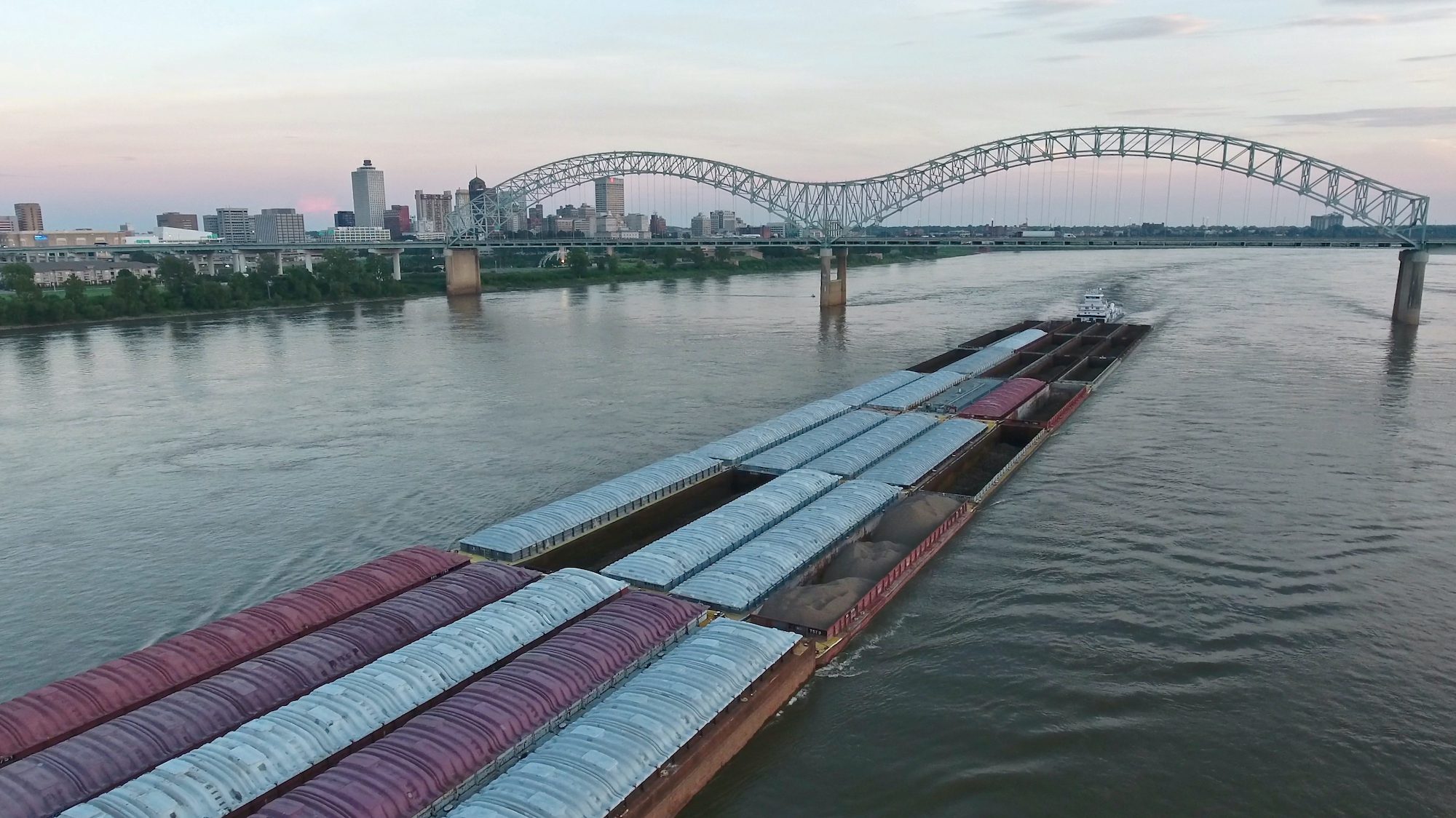Photo credit Michael Carr
By Michael Carr – It’s difficult to describe the sound an 18 ft. aluminum sailboat boom makes when it fails under an immense load. Combine screeching, cracking, and exploding and you will come fairly close to this painful and terrifying sound.
It was September, and we were broad reaching in the Atlantic Ocean, en route Newport RI from Norfolk VA. A strong cold front was approaching us from the west and our winds were initially from the SE at 15 to 20 knots and increasing. We knew the cold front would pass over us within the next few hours, bringing a dramatic wind shift from SE to NW. Winds were forecast to increase to 40-45 knots. This is what we wanted.
We had up a reefed & full battened mainsail, and staysail. Our starboard side ballast tanks were pressed up with several tons of water, so the boat’s angle of heel was only a few degrees to port. GPS speed was 30+ knots. We were flying, with only the aft portion of the 60-foot aluminum hull touching the water. Our aluminum boom was eased out to port and held down by a combination guy & preventer. As the boat surfed along, there was no wake, just water swooshing out from beneath the vertical 20 ft. wide transom. Twin rudders, angled at 15 degrees, kept the boat tracking with little to no helm. It was a memorizing and awesome feeling. This boat could easily win the BOC Around the World race if only we could get to the starting line.
But there were a multitude of problems and concerns. The boom, though working now, had been improperly constructed. A detailed construction design had been misread by the builder, who had built the boom “inside out”. Meant to have the structure of an “I” beam, the boom instead lacked the required core strength. Additionally, the combination guy/preventer holding the boom down was not the specified “saddle” needed to spread the load, but a single piece of Kevlar line looped over the boom and tied down to the deck rail. It was all-wrong; concentrated loads, improper securing, no quick release. But it was all we had. It would have to do for now.
We were out of money. We had some sponsors, enough to build the boat, and the carbon fiber 100 ft. mast. We bought basic sails and interior equipment, but there was so much more than was needed. This is why we were sailing to Newport RI. To showcase the boat, and gain more financial support.
Everyone onboard, our crew of just four, were exhausted. We had been working on this project for over 2 years, every day. Our efforts, and those of others ashore had produced an amazing 60 ft. racing sailboat, which contained many innovative features, such as hard chines. Other competitors had considered hard chines and 100 ft. masts, but never attempted these design features. We could see the hard chines working, pushing water away from the hull as the boat surfed along. Boat speed is limited by friction and displacement. Keep a boat on top of the water, reduce friction, and your speed increases exponentially. Hard chines shed water from the hull, increasing speed.
But we had no funds for more sails, or for fully outfitting the boat. We needed to get to Newport, a sailing mecca, and gain more funding. So we took turns at hand steering, we still had no autopilot. At 30 knots we should be Newport in under 24 hours. Steer, nap, eat ramen noodles, and steer. Our plan; just gut it out, get to Newport.
Expecting the wind shift we prepared to head up into the wind as it backed to the NW, and then ease the boom out to starboard. Then shift ballast to the port side and fall off on a close reach towards Newport. We had intentionally headed to the west of north when departing Norfolk so we would have plenty of room to ease off to the NE once the wind shifted. We had a solid plan. Until the boom broke.
As in many strong cold front passages, the event came fast. Winds were from the SE, strong and steady, and then they seem to stop and become erratic, and then in a split second wind direction changed. We were expecting this change, but it came too fast. Winds shifted from SE to NW and came at us at 40 knots. The mainsail was caught back and the force against the preventer and boom was immense. Every mechanical system has its weak link, and here it was the boom. Point loading on the improperly designed boom caused it to fold in the middle, turning from a straight boom into a “V” shaped bent piece of aluminum.
Chaos ensued. Douse the mainsail, douse the jib. Secure the sails. Secure the broken boom. We had no engine or auxiliary power. After scrambling to contain the mess we raised the jib, but soon realized that continuing on to Newport RI was not a good plan. We were making only 10 knots, and arriving in Newport exhausted and with a broken boat, was not what we needed.
“We need to turn around,” I finally said. Exhausted beyond comprehension everyone agreed. We headed back to Norfolk. We were beyond fatigue; everyone was exhausted from both short-term sleep deprivation and long term chronic stress.
As I steered the boat back towards Norfolk, now romping along at 15 knots under staysail alone, I thought to myself, “I am not sure there is anything more we can or could do to make this campaign work.” Sometimes you just have to accept there are limits to what you can accomplish. But, I thought, we sure made a go of this, and at least we accomplished one ocean sail, and proved this boat can sail damn fast.”

 Join The Club
Join The Club











